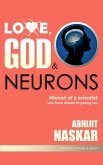Richard P. Smiraglia
The Nature of 'A Work' (eBook, ePUB)
Implications for the Organization of Knowledge
69,95 €
69,95 €
inkl. MwSt.
Sofort per Download lieferbar

35 °P sammeln
69,95 €
Als Download kaufen

69,95 €
inkl. MwSt.
Sofort per Download lieferbar

35 °P sammeln
Jetzt verschenken
Alle Infos zum eBook verschenken
69,95 €
inkl. MwSt.
Sofort per Download lieferbar
Alle Infos zum eBook verschenken

35 °P sammeln
Richard P. Smiraglia
The Nature of 'A Work' (eBook, ePUB)
Implications for the Organization of Knowledge
- Format: ePub
- Merkliste
- Auf die Merkliste
- Bewerten Bewerten
- Teilen
- Produkt teilen
- Produkterinnerung
- Produkterinnerung

Bitte loggen Sie sich zunächst in Ihr Kundenkonto ein oder registrieren Sie sich bei
bücher.de, um das eBook-Abo tolino select nutzen zu können.
Hier können Sie sich einloggen
Hier können Sie sich einloggen
Sie sind bereits eingeloggt. Klicken Sie auf 2. tolino select Abo, um fortzufahren.

Bitte loggen Sie sich zunächst in Ihr Kundenkonto ein oder registrieren Sie sich bei bücher.de, um das eBook-Abo tolino select nutzen zu können.
Living legend Smiraglia has written the first book devoted exclusively to exploring the concept that is commonly referred to as a bibliographic "Work." In bringing together material from both inside and outside the discipline of information studies, he traces the continuing development of catalogs, search engines, and other kinds of information retrieval tools, the better to understand the maze of editions and revisions and translations that make up the evolution of a Work.
Two appendixes contain charts demonstrating the evolution of concepts and definitions of a Work; a third contains a…mehr
- Geräte: eReader
- ohne Kopierschutz
- eBook Hilfe
Andere Kunden interessierten sich auch für
![Philosophers Who Changed History (eBook, ePUB) Philosophers Who Changed History (eBook, ePUB)]() DkPhilosophers Who Changed History (eBook, ePUB)11,99 €
DkPhilosophers Who Changed History (eBook, ePUB)11,99 €![Journey to the Edge of Reason (eBook, ePUB) Journey to the Edge of Reason (eBook, ePUB)]() Stephen BudianskyJourney to the Edge of Reason (eBook, ePUB)11,95 €
Stephen BudianskyJourney to the Edge of Reason (eBook, ePUB)11,95 €![The Albert Einstein Collection Volume Two (eBook, ePUB) The Albert Einstein Collection Volume Two (eBook, ePUB)]() Albert EinsteinThe Albert Einstein Collection Volume Two (eBook, ePUB)32,09 €
Albert EinsteinThe Albert Einstein Collection Volume Two (eBook, ePUB)32,09 €![Love, God & Neurons: Memoir of A Scientist Who Found Himself by Getting Lost (eBook, ePUB) Love, God & Neurons: Memoir of A Scientist Who Found Himself by Getting Lost (eBook, ePUB)]() Abhijit NaskarLove, God & Neurons: Memoir of A Scientist Who Found Himself by Getting Lost (eBook, ePUB)9,49 €
Abhijit NaskarLove, God & Neurons: Memoir of A Scientist Who Found Himself by Getting Lost (eBook, ePUB)9,49 €![Omar Khayyam (eBook, ePUB) Omar Khayyam (eBook, ePUB)]() Nick M. LoghmaniOmar Khayyam (eBook, ePUB)29,95 €
Nick M. LoghmaniOmar Khayyam (eBook, ePUB)29,95 €![Dawn of the New Everything (eBook, ePUB) Dawn of the New Everything (eBook, ePUB)]() Jaron LanierDawn of the New Everything (eBook, ePUB)9,49 €
Jaron LanierDawn of the New Everything (eBook, ePUB)9,49 €![Giordano Bruno (eBook, ePUB) Giordano Bruno (eBook, ePUB)]() Ludwig KuhlenbeckGiordano Bruno (eBook, ePUB)2,13 €
Ludwig KuhlenbeckGiordano Bruno (eBook, ePUB)2,13 €-
-
-
Living legend Smiraglia has written the first book devoted exclusively to exploring the concept that is commonly referred to as a bibliographic "Work." In bringing together material from both inside and outside the discipline of information studies, he traces the continuing development of catalogs, search engines, and other kinds of information retrieval tools, the better to understand the maze of editions and revisions and translations that make up the evolution of a Work.
Two appendixes contain charts demonstrating the evolution of concepts and definitions of a Work; a third contains a summary of the sampling technique employed to generate the data in chapter 5 "Defining the Work in Quantatative Terms" and chapter 6 "The Constitution of Bibliographic Families."
Two appendixes contain charts demonstrating the evolution of concepts and definitions of a Work; a third contains a summary of the sampling technique employed to generate the data in chapter 5 "Defining the Work in Quantatative Terms" and chapter 6 "The Constitution of Bibliographic Families."
Produktdetails
- Produktdetails
- Verlag: Bloomsbury eBooks US
- Seitenzahl: 216
- Erscheinungstermin: 10. September 2001
- Englisch
- ISBN-13: 9781461673309
- Artikelnr.: 39142775
- Verlag: Bloomsbury eBooks US
- Seitenzahl: 216
- Erscheinungstermin: 10. September 2001
- Englisch
- ISBN-13: 9781461673309
- Artikelnr.: 39142775
- Herstellerkennzeichnung Die Herstellerinformationen sind derzeit nicht verfügbar.
Richard Smiraglia is Professor at Palmer School of Library and Information Science, Long Island University (Brookville, NY).
Part 1 What Is the Nature of a Work?
Chapter 2 The Bibliographic Universe
Chapter 3 Works and the Design of Bibliographic Retrieval Systems
Chapter 4 Works and Texts
Chapter 5 The Digital Imperative: What Is an Electronic Work?
Chapter 6 How Do We Answer the Question: What Is the Nature of a Work?
Part 7 The Concept of the Work in Anglo-American Cataloging: An Historical
Narrative
Chapter 8 A Multiplicity of Editions
Chapter 9 The "Literary Unit"
Chapter 10 The International Conference on Cataloguing Principles (1961)
Chapter 11 Defining "The Work"
Chapter 12 From Multiplicity to Bibliographic Relationships
Part 13 Bibliographic Relationships Give Parameters to the Concept of a
Work
Chapter 14 The Humphrey Clinker Effect
Chapter 15 A Taxonomy of Bibliographic Relationships
Chapter 16 A Taxonomy of Derivation
Chapter 17 Functional Requirements for Bibliographic Records
Chapter 18 Toward Consensus on the Concept of the Work
Part 19 Reflections on the Creative Task: Linguistics, Philosophy,
Semiotics, and Bibliography
Chapter 20 Works as Vehicles for Communication
Chapter 21 Volatility of Works-Varieties of Perception in Reception of
Works
Chapter 22 Volatility of Texts-Changes in Representation of Works
Chapter 23 Evolution in the Creatorship of Works
Chapter 24 A Work Is a Cultural Phenomenon
Part 25 Defining the Work in Quantitative Terms
Chapter 26 Early Research Indicating the Presence of Derivative
Bibliographic Relationships
Chapter 27 Research Describing Derivative Bibliographic Relationships
Chapter 28 Works in Libraries
Chapter 29 The Incidence of Derivative Bibliographic Relationships
Chapter 30 Characteristics of Works with Bibliographic Families
Chapter 31 Summarizing the Data
Part 32 The Constitution of Bibliographic Families
Chapter 33 Qualitative Analysis of Bibliographic Families
Chapter 34 Evolution of Works
Part 35 Toward a Theory of the Work
Chapter 36 The Paradigm of the Work
Chapter 37 The Social Role of Works
Chapter 38 The Quantitative Evidence
Chapter 39 Methodological Implications
Chapter 40 The Parameters of a Theory of the Work
Chapter 41 Implications for Knowledge Organization
Chapter 42 Conclusion
Chapter 2 The Bibliographic Universe
Chapter 3 Works and the Design of Bibliographic Retrieval Systems
Chapter 4 Works and Texts
Chapter 5 The Digital Imperative: What Is an Electronic Work?
Chapter 6 How Do We Answer the Question: What Is the Nature of a Work?
Part 7 The Concept of the Work in Anglo-American Cataloging: An Historical
Narrative
Chapter 8 A Multiplicity of Editions
Chapter 9 The "Literary Unit"
Chapter 10 The International Conference on Cataloguing Principles (1961)
Chapter 11 Defining "The Work"
Chapter 12 From Multiplicity to Bibliographic Relationships
Part 13 Bibliographic Relationships Give Parameters to the Concept of a
Work
Chapter 14 The Humphrey Clinker Effect
Chapter 15 A Taxonomy of Bibliographic Relationships
Chapter 16 A Taxonomy of Derivation
Chapter 17 Functional Requirements for Bibliographic Records
Chapter 18 Toward Consensus on the Concept of the Work
Part 19 Reflections on the Creative Task: Linguistics, Philosophy,
Semiotics, and Bibliography
Chapter 20 Works as Vehicles for Communication
Chapter 21 Volatility of Works-Varieties of Perception in Reception of
Works
Chapter 22 Volatility of Texts-Changes in Representation of Works
Chapter 23 Evolution in the Creatorship of Works
Chapter 24 A Work Is a Cultural Phenomenon
Part 25 Defining the Work in Quantitative Terms
Chapter 26 Early Research Indicating the Presence of Derivative
Bibliographic Relationships
Chapter 27 Research Describing Derivative Bibliographic Relationships
Chapter 28 Works in Libraries
Chapter 29 The Incidence of Derivative Bibliographic Relationships
Chapter 30 Characteristics of Works with Bibliographic Families
Chapter 31 Summarizing the Data
Part 32 The Constitution of Bibliographic Families
Chapter 33 Qualitative Analysis of Bibliographic Families
Chapter 34 Evolution of Works
Part 35 Toward a Theory of the Work
Chapter 36 The Paradigm of the Work
Chapter 37 The Social Role of Works
Chapter 38 The Quantitative Evidence
Chapter 39 Methodological Implications
Chapter 40 The Parameters of a Theory of the Work
Chapter 41 Implications for Knowledge Organization
Chapter 42 Conclusion
Part 1 What Is the Nature of a Work?
Chapter 2 The Bibliographic Universe
Chapter 3 Works and the Design of Bibliographic Retrieval Systems
Chapter 4 Works and Texts
Chapter 5 The Digital Imperative: What Is an Electronic Work?
Chapter 6 How Do We Answer the Question: What Is the Nature of a Work?
Part 7 The Concept of the Work in Anglo-American Cataloging: An Historical
Narrative
Chapter 8 A Multiplicity of Editions
Chapter 9 The "Literary Unit"
Chapter 10 The International Conference on Cataloguing Principles (1961)
Chapter 11 Defining "The Work"
Chapter 12 From Multiplicity to Bibliographic Relationships
Part 13 Bibliographic Relationships Give Parameters to the Concept of a
Work
Chapter 14 The Humphrey Clinker Effect
Chapter 15 A Taxonomy of Bibliographic Relationships
Chapter 16 A Taxonomy of Derivation
Chapter 17 Functional Requirements for Bibliographic Records
Chapter 18 Toward Consensus on the Concept of the Work
Part 19 Reflections on the Creative Task: Linguistics, Philosophy,
Semiotics, and Bibliography
Chapter 20 Works as Vehicles for Communication
Chapter 21 Volatility of Works-Varieties of Perception in Reception of
Works
Chapter 22 Volatility of Texts-Changes in Representation of Works
Chapter 23 Evolution in the Creatorship of Works
Chapter 24 A Work Is a Cultural Phenomenon
Part 25 Defining the Work in Quantitative Terms
Chapter 26 Early Research Indicating the Presence of Derivative
Bibliographic Relationships
Chapter 27 Research Describing Derivative Bibliographic Relationships
Chapter 28 Works in Libraries
Chapter 29 The Incidence of Derivative Bibliographic Relationships
Chapter 30 Characteristics of Works with Bibliographic Families
Chapter 31 Summarizing the Data
Part 32 The Constitution of Bibliographic Families
Chapter 33 Qualitative Analysis of Bibliographic Families
Chapter 34 Evolution of Works
Part 35 Toward a Theory of the Work
Chapter 36 The Paradigm of the Work
Chapter 37 The Social Role of Works
Chapter 38 The Quantitative Evidence
Chapter 39 Methodological Implications
Chapter 40 The Parameters of a Theory of the Work
Chapter 41 Implications for Knowledge Organization
Chapter 42 Conclusion
Chapter 2 The Bibliographic Universe
Chapter 3 Works and the Design of Bibliographic Retrieval Systems
Chapter 4 Works and Texts
Chapter 5 The Digital Imperative: What Is an Electronic Work?
Chapter 6 How Do We Answer the Question: What Is the Nature of a Work?
Part 7 The Concept of the Work in Anglo-American Cataloging: An Historical
Narrative
Chapter 8 A Multiplicity of Editions
Chapter 9 The "Literary Unit"
Chapter 10 The International Conference on Cataloguing Principles (1961)
Chapter 11 Defining "The Work"
Chapter 12 From Multiplicity to Bibliographic Relationships
Part 13 Bibliographic Relationships Give Parameters to the Concept of a
Work
Chapter 14 The Humphrey Clinker Effect
Chapter 15 A Taxonomy of Bibliographic Relationships
Chapter 16 A Taxonomy of Derivation
Chapter 17 Functional Requirements for Bibliographic Records
Chapter 18 Toward Consensus on the Concept of the Work
Part 19 Reflections on the Creative Task: Linguistics, Philosophy,
Semiotics, and Bibliography
Chapter 20 Works as Vehicles for Communication
Chapter 21 Volatility of Works-Varieties of Perception in Reception of
Works
Chapter 22 Volatility of Texts-Changes in Representation of Works
Chapter 23 Evolution in the Creatorship of Works
Chapter 24 A Work Is a Cultural Phenomenon
Part 25 Defining the Work in Quantitative Terms
Chapter 26 Early Research Indicating the Presence of Derivative
Bibliographic Relationships
Chapter 27 Research Describing Derivative Bibliographic Relationships
Chapter 28 Works in Libraries
Chapter 29 The Incidence of Derivative Bibliographic Relationships
Chapter 30 Characteristics of Works with Bibliographic Families
Chapter 31 Summarizing the Data
Part 32 The Constitution of Bibliographic Families
Chapter 33 Qualitative Analysis of Bibliographic Families
Chapter 34 Evolution of Works
Part 35 Toward a Theory of the Work
Chapter 36 The Paradigm of the Work
Chapter 37 The Social Role of Works
Chapter 38 The Quantitative Evidence
Chapter 39 Methodological Implications
Chapter 40 The Parameters of a Theory of the Work
Chapter 41 Implications for Knowledge Organization
Chapter 42 Conclusion







